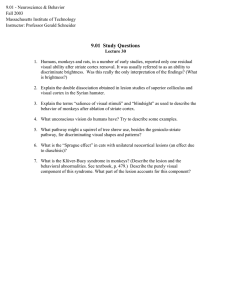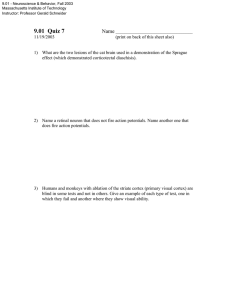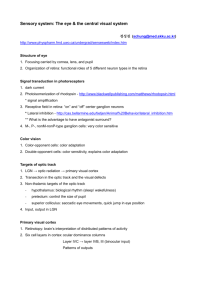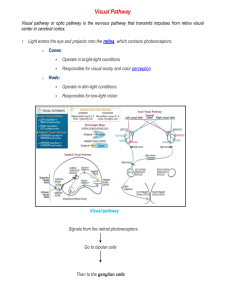9.01 - Neuroscience & Behavior Fall 2003 Massachusetts Institute of Technology
advertisement
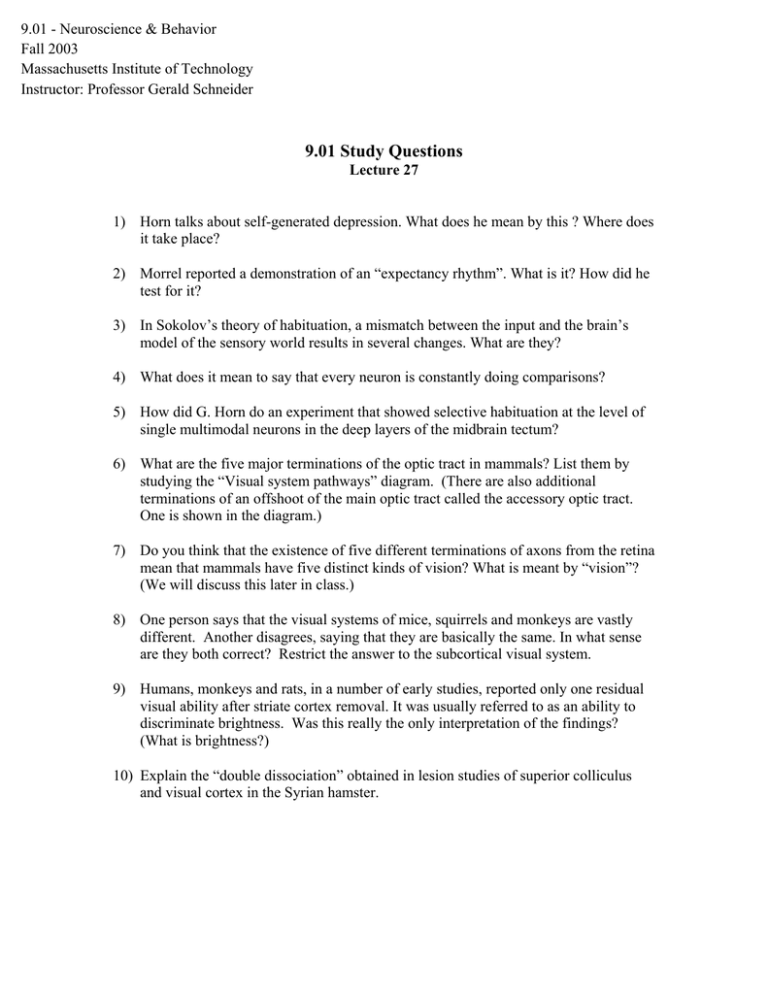
9.01 - Neuroscience & Behavior Fall 2003 Massachusetts Institute of Technology Instructor: Professor Gerald Schneider 9.01 Study Questions Lecture 27 1) Horn talks about self-generated depression. What does he mean by this ? Where does it take place? 2) Morrel reported a demonstration of an “expectancy rhythm”. What is it? How did he test for it? 3) In Sokolov’s theory of habituation, a mismatch between the input and the brain’s model of the sensory world results in several changes. What are they? 4) What does it mean to say that every neuron is constantly doing comparisons? 5) How did G. Horn do an experiment that showed selective habituation at the level of single multimodal neurons in the deep layers of the midbrain tectum? 6) What are the five major terminations of the optic tract in mammals? List them by studying the “Visual system pathways” diagram. (There are also additional terminations of an offshoot of the main optic tract called the accessory optic tract. One is shown in the diagram.) 7) Do you think that the existence of five different terminations of axons from the retina mean that mammals have five distinct kinds of vision? What is meant by “vision”? (We will discuss this later in class.) 8) One person says that the visual systems of mice, squirrels and monkeys are vastly different. Another disagrees, saying that they are basically the same. In what sense are they both correct? Restrict the answer to the subcortical visual system. 9) Humans, monkeys and rats, in a number of early studies, reported only one residual visual ability after striate cortex removal. It was usually referred to as an ability to discriminate brightness. Was this really the only interpretation of the findings? (What is brightness?) 10) Explain the “double dissociation” obtained in lesion studies of superior colliculus and visual cortex in the Syrian hamster.
